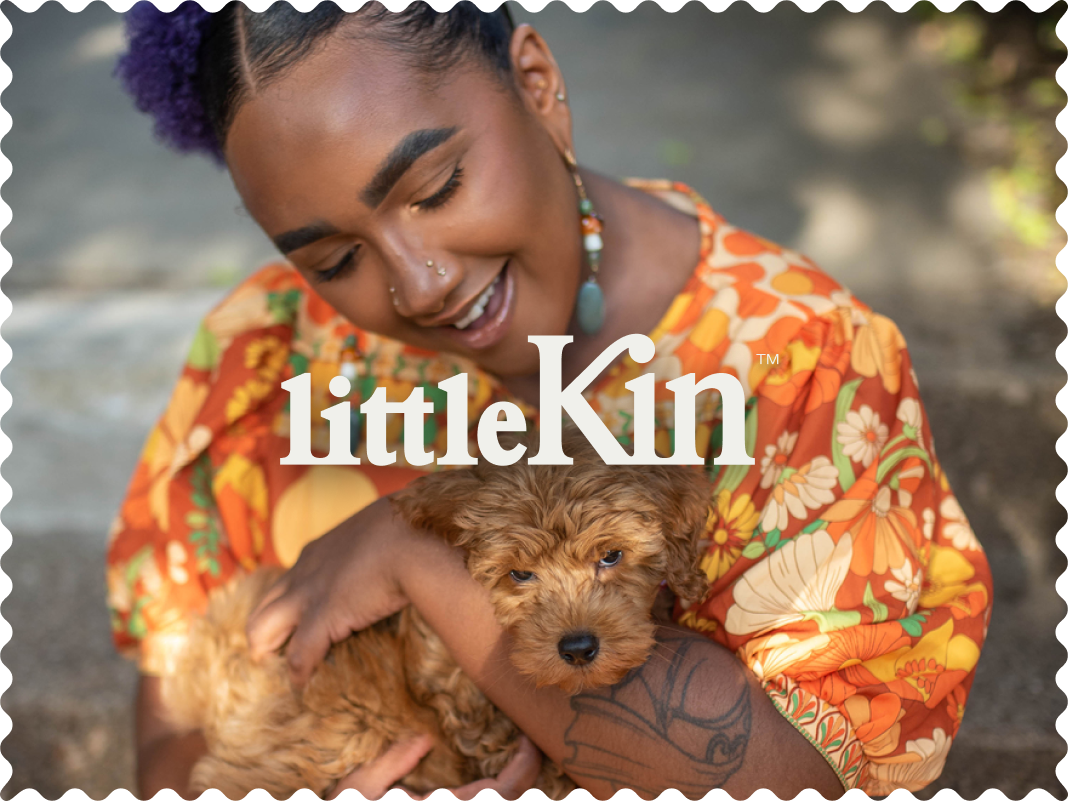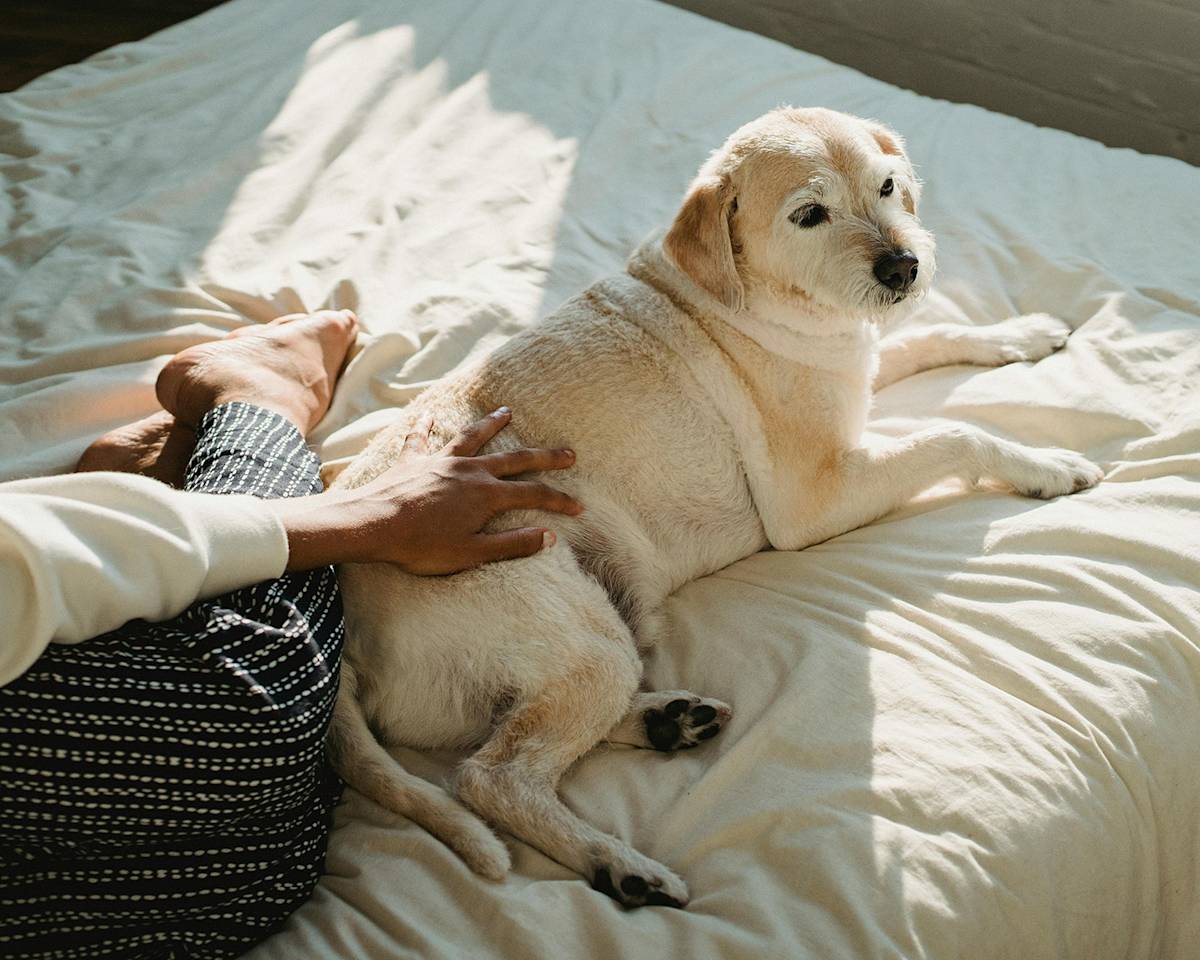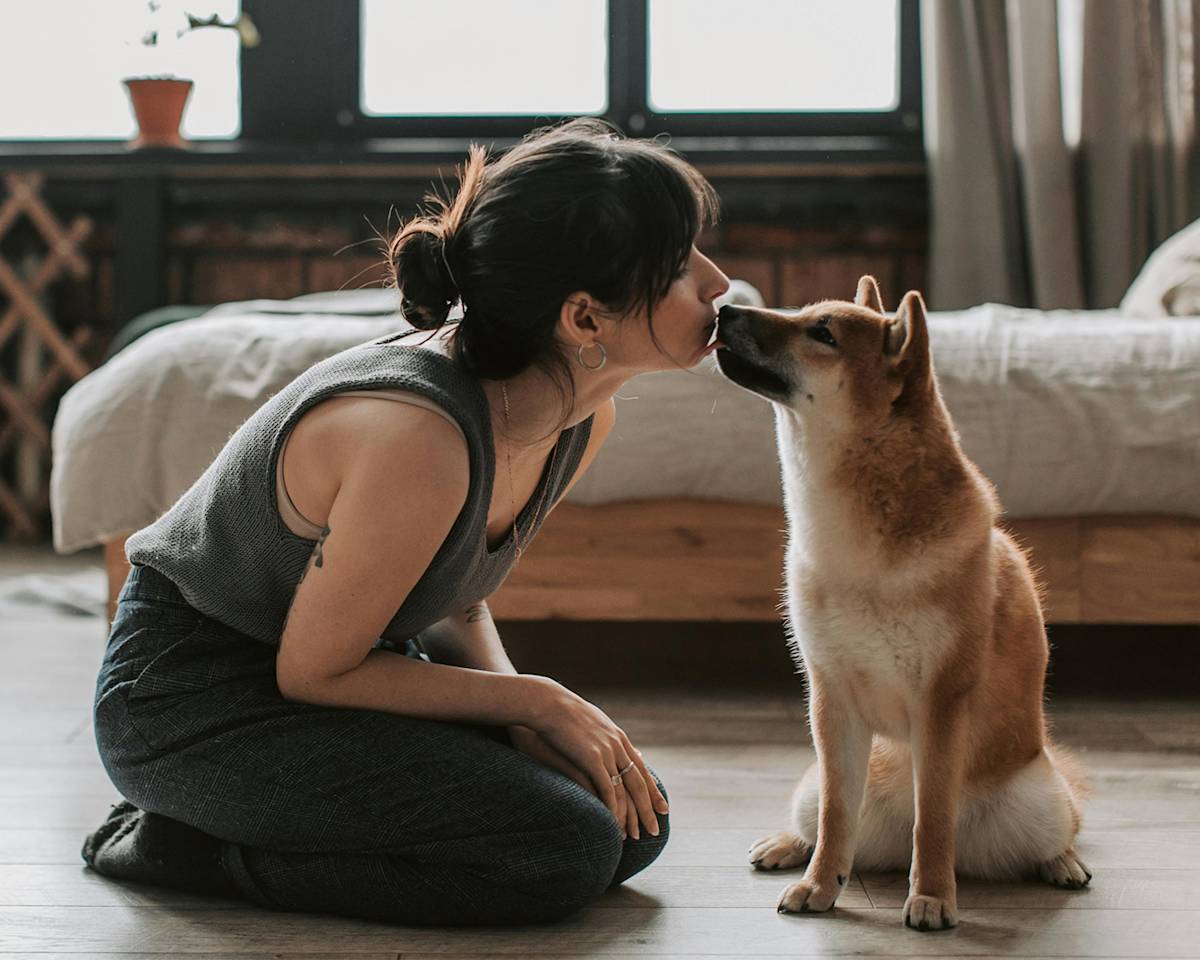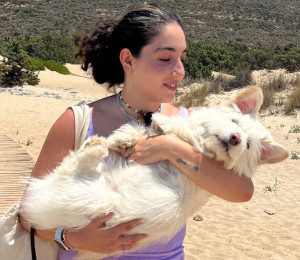Can Dogs Have Autism? Here’s What the Experts Say
What pet parents need to know about canine behaviour
In this article:
Can dogs have autism? What is Canine Dysfunctional Behaviour? What is Canine Cognitive Dysfunction? Behavioural changes The vaccine-autism myth How to help your dog thrive
Over 2.20 percent of adults in the United Statesopens in new tab (1–3 percent in the UKopens in new tab) live with Autistic Spectrum Disorders (ASD), and one in every 100 children is diagnosed with ASD every year. Dogs can sometimes display behavioural characteristics and traits that we interpret to be human-like, and for some dogs this includes traits that we might associate with ASD. But can dogs actually be on the autism spectrum?
Can dogs be diagnosed with autism?
The short answer? No, dogs can’t officially be diagnosed with autism. While dogs might display traits or behaviours that might remind you of autism in humans, there is no officially recognised diagnosis for dogs in the veterinary world. However, when dogs show these traits, vets and behaviourists often group them under something called ‘canine dysfunctional behaviour’ (CDB).
While not an official medical term, “CDB has been used to describe a range of behaviours in dogs, and some of those can be similar to the autistic spectrum [in humans],” says Caroline Wilkinson, certified animal behaviourist and founder of digital pet coaching service Barket Placeopens in new tab.
How much do you spend on your pet per year?
Dr Kathryn Denchopens in new tab, MA VetMB agrees: “While dogs cannot be diagnosed with autism as humans can, certain atypical behaviours and neurodevelopmental anomalies in dogs are often likened to ASD in humans. These observations are primarily based on behavioural traits and neurological assessments.”
But here’s the important bit: when we talk about dogs having about dogs displaying behaviours that remind us of autism in humans, we’re actually doing something called anthropomorphisationopens in new tab – essentially interpreting canine behaviours through a human lens. It’s us making these connections and likening dog behaviours to those of ASD, not necessarily dogs experiencing autism as humans do.
What exactly is Canine Dysfunctional Behaviour (CDB)?
Canine dysfunctional behaviour (CDB) is not necessarily a neurological condition like ASD. Think of it instead as an umbrella term (rather than a specific medical condition) used to describe a collection of dog behaviours that, to us humans, look similar to autism. These may include obsessive compulsive behaviours (hello, tail-chasing marathons), unexpected responses to situations or stimuli, or appearing to communicate differently than other dogs.
But here’s the plot twist: a recent survey on more than 4,000 dogsopens in new tab found that 85 percent of pet parents surveyed reported some kind of behavioural issue in their dogs, suggesting that behavioural differences in dogs likely have diverse underlying causes, rather than stemming from a singular neurological condition such as autism.
The key takeaway? CDB describes what we observe, not an actual autism diagnosis. Dogs simply cannot be definitively diagnosed with autism as we currently understand it in humans. However, current research is still exploring whether CDB represents an underlying neurological condition or is simply a way to categorise certain behavioural patterns we observe in dogs.
Don’t confuse CDB with CCD
There’s another related term floating about – ‘canine cognitive dysfunction’ (CCD) – which describes behaviours we associate with dementia in humans. Some of these behaviours overlap with behaviours we might associate with autism in humans, but CCD affects 14–35 percent of dogsopens in new tab over eight years old and represents age-related cognitive decline rather than a developmental condition.
What behaviours are we talking about?
Not every dog showing these behaviours would be labelled with CDB or CCS – these are just ways to group certain patterns of behaviours, not an official diagnosis. Most importantly, each behaviour should be looked at individually, along with what could potentially be causing it.
Some behaviours could be triggered by other causes entirely. For example, increased anxiety can sometimes result from an underlying medical condition or new onset of pain. If you’re worried about unusual behaviours in your pup, chat to your vet first to rule out any underlying health issues before considering behavioural labels.
That being said, there are some typical habits that humans might associate with autism because of anthropomorphism, says Caroline.
Being less inclined to have social interactions.
Not making eye contact (although many dogs naturally don’t).
Not responding to pointing gestures.
Displaying repetitive behaviours.
Increased anxiety or aggressive tendencies.
Dr Dench also lists these behaviours in dogs that might be categorised as CDB:
Persistent and repetitive actions.
Issues with social interaction (with humans or dogs).
Unusual responses to sensory stimuli.
Compulsive pacing, fixed routines or rituals.
Indifference to cues.
Hypersensitivity to touch or sounds.
“Observing your dog’s reaction to new environments or changes in routine can also provide clues,” says Dr Dench. Overall, your dog may be less sociable, struggling with certain situations or learning new things.
However, it’s crucial to remember that spotting some of these behaviours doesn’t mean you should attempt to diagnose your dog yourself. As recent research into canine ADHDopens in new tab has highlighted, professional interpretation is essential – what might appear to be one condition could actually be something entirely different, or even perfectly normal behaviour for that individual dog. A certified animal behaviourist can help distinguish between potentially concerning patterns of behaviour and typical canine quirks.
Behavioural changes don’t automatically equal CDB
When your beloved pup starts acting out of character, it’s only natural to worry and wonder why – but jumping to conclusions isn’t helpful for anyone, especially your dog.
Behaviours – even the ones mentioned above – won’t always mean that your dog fits the CDB category, and there are a number of factors that could influence your dog, explains Caroline.
Sometimes, your dog’s actions might stem from discomfort, pain or another underlying health issue. One 2020 study found that up to 80 percent of behavioural problemsopens in new tab in dogs have an underlying medical cause. Behaviours such as withdrawal, hiding or avoiding social interaction, which might look like CDB, but could be something entirely different.
If your dog’s behaviour has changed, your vet should always be your first port of call. They can rule out potential causes such as nutritional deficiencies, thyroid issues or gut health concerns – all of which can dramatically affect your pet’s demeanour.
A full health check, including blood tests, is often recommended to get to the bottom of what’s going on. Sometimes, the answer isn’t as simple as a behavioural categorisation but a deeper health-related concern that can be managed or treated.
The vaccine-autism myth (yes, it exists for dogs too)
Despite what some might think, the British Veterinary Association has debunkedopens in new tab the link between vaccinations and autism in dogs. “There is no scientific evidence to support a link between vaccines and autism in dogs,” says Dr Dench. “The benefits of vaccinations in preventing serious canine diseases far outweigh the unproven risks of inducing ‘autism-like’ symptoms.”
Despite this science, a US surveyopens in new tab found that 37 percent of dog parents believed that canine vaccination could cause their dogs to develop autism. A 2023 studyopens in new tab showed 53 percent of people had some hesitancy about vaccinating their dogs – showing how debunked human vaccine misinformation has unfortunately spread to pet care.
How to help your dog thrive, whatever their unique personality traits
If you’re concerned about your dog’s behaviour, a visit to the vet is always step one, particularly to rule out any medical causes. Once any health concerns are addressed, there are plenty of ways to give your dog the support they might need.
“It’s essential to approach this topic with an open mind and a commitment to the health and well-being of our canine companions,” highlights Dr Dench.
If you feel like your dog might need some extra TLC, there are a few expert-backed things you can do to support them:
Structure: a structured and predictable environment, routine and regular training sessions can significantly reduce stress and boost confidence.
Training: specialised training programmesopens in new tab that include techniques for sensory processing can improve communication between you and your dog.
Environment: make sure your dog has a dedicated, calm space for them to retreat to at home – somewhere that feels safe and secure.
Rest: good quality sleep and rest is critical in reducing cortisol (the stress hormone) levels and improving overall well-being.
Encouragement: offer positive opportunities for exploration and activity.
Space: allow them space and time to process to think about how they want to react in different situations.
If your dog needs extra help, reaching out to an animal behaviourist who specialises in ethical, force-free techniques, can be invaluable. Pairing this with guidance from a vet who understands behavioural issues ensures you’re taking a holistic approach to your dog’s care.
Small changes, big impact
Sometimes the smallest tweaks to your dog’s daily life can work wonders. “Optimism is a great thing for us to encourage in our dogs,” says Caroline. “Activities such as scent work or playing calming music can help change how your dog feels about the world.”
Whether your dog is struggling with specific behaviours or just needs a little extra TLC, the right combination of veterinary support, structure and loving attention can help them lead a more positive and fulfilling life.
References
“Autism Statistics.opens in new tab” National Autistic Society, autism.org.uk.
British Veterinary Association. “UK’s Leading Veterinary Body Debunks Link Between Canine Autism and Vaccination.opens in new tab” BVA News, 15 Nov. 2018.
Centers for Disease Control and Prevention. “Key Findings: Estimated Number of Adults Living with Autism Spectrum Disorder in the United States, 2017.opens in new tab” CDC, 16 May 2024.
Fast, Caitlin D., et al. “Systematic Review and Meta-Analysis of Non-Pharmacological Interventions for Behavioral Problems in Dogs.opens in new tab” Animals, vol. 13, no. 6, 2023, article 1044.
Landsberg, Gary M., et al. “Cognitive Dysfunction Syndrome: A Disease of Canine and Feline Brain Aging.opens in new tab” Veterinary Clinics of North America: Small Animal Practice, vol. 42, no. 4, 2012, pp. 749-768.
Lefebvre, Dorothea, et al. “Metformin for Treatment of Canine Cognitive Dysfunction: A Feasibility Study.opens in new tab” Animals, vol. 12, no. 8, 2022, article 1021.
Salvin, Hannah E., et al. “Under Diagnosis of Canine Cognitive Dysfunction: A Cross-Sectional Survey of Older Companion Dogsopens in new tab.” Veterinary Journal, vol. 184, no. 3, 2010, pp. 277-281.
Salvin, Hannah E., et al. “The Canine Cognitive Dysfunction Rating Scale (CCDR): A Data-Driven and Ecologically Relevant Assessment Tool.opens in new tab” Veterinary Journal, vol. 188, no. 3, 2011, pp. 331-336,
Serpell, James A., and Deborah L. Duffy. “Aspects of Juvenile and Adolescent Environment Predict Aggression and Fear in 12-Month-Old Guide Dogs.opens in new tab” Frontiers in Veterinary Science, vol. 3, 2016, article 49.
Tardif, Colleen, et al. “Vaccine Hesitancy Among Pet Owners in the United States: A Cross-Sectional Survey.opens in new tab” Vaccine, vol. 41, no. 42, 2023, pp. 6198-6207.
Mills, Daniel S., et al. “Pain and Problem Behavior in Cats and Dogs.opens in new tab” Animals, vol. 10, no. 2, 1 Feb. 2020, p. 318.












